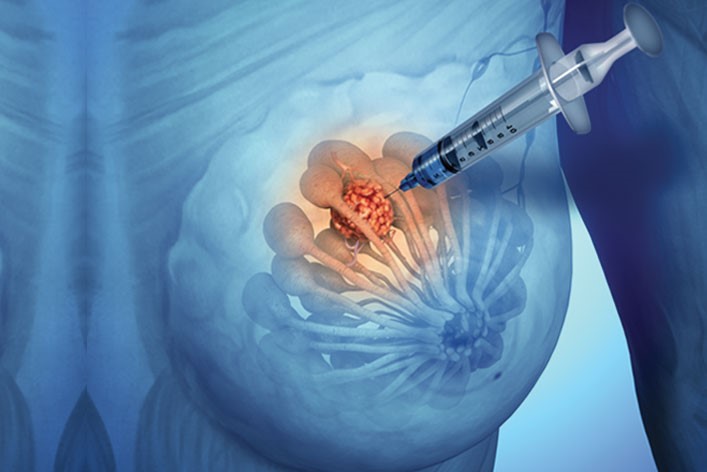
What is needle aspiration (or needle biopsy or biopsy)?
Needle aspiration is a technique – also known as needle biopsy or biopsy – that allows biological material, mainly tissue and cells, to be taken through a very thin needle from body sites and organs, such as the thyroid gland or breast in the case of suspected tumour formations
The samples are then subjected to laboratory tests: cytological examination in the case of needle aspiration (cytology is the study of cells), histological in the case of biopsy (histology is the medical observation of tissues), to establish their nature and characteristics or to rule out the diagnosis of a malignant tumour.
What is needle aspiration used for?
The use of this technique is common in the field of oncology.
It is usually performed following X-rays and CT scans that have revealed probable lesions or tumour lesions to ascertain their nature.
Needle aspiration consists of taking samples with a hollow needle, slightly thicker than that of normal syringes, which is introduced through the skin allowing a small fraction of tissue to be ‘aspirated’.
Needle biopsy uses a thicker needle to take a larger amount of tissue (frustule)
Usually needle biopsy provides sufficient tissue for pathological anatomy examination to diagnose most tumours.
![]() Is it a painful or dangerous examination?
Is it a painful or dangerous examination?
It is a simple, safe and generally painless technique.
In the case of thyroid needle aspiration, for example, the sampling is very quick, minimally invasive, precisely guided by ultrasound instruments, and does not require anaesthesia.
The only preparation rules for the person undergoing the procedure are fasting and the suspension of any medical therapies agreed upon with the treating physician and endocrinologist.
It can also be performed in pregnant women, with no contraindications.
In the case of breast lump needle aspiration, the sample is also taken under ultrasound guidance, lasts a few minutes, is painless, does not require anaesthesia (except in special cases), and leaves no pain.
Rarely, some discomfort may be experienced due to possible haematomas, which is relieved with simple ice packs.
No special preparation rules need to be followed.
How does it work?
The session for needle aspiration (thyroid or breast lump) takes only a few minutes and does not require hospitalisation or anaesthesia.
The person is made to lie on a couch, in a relaxed position that is easy for the doctor to perform the sampling.
The person can return to their home immediately afterwards without needing to be accompanied.
Read Also:
Emergency Live Even More…Live: Download The New Free App Of Your Newspaper For IOS And Android
What Is An ECG And When To Do An Electrocardiogram
MRI, Magnetic Resonance Imaging Of The Heart: What Is It And Why Is It Important?
Mammary MRI: What It Is And When It Is Done




